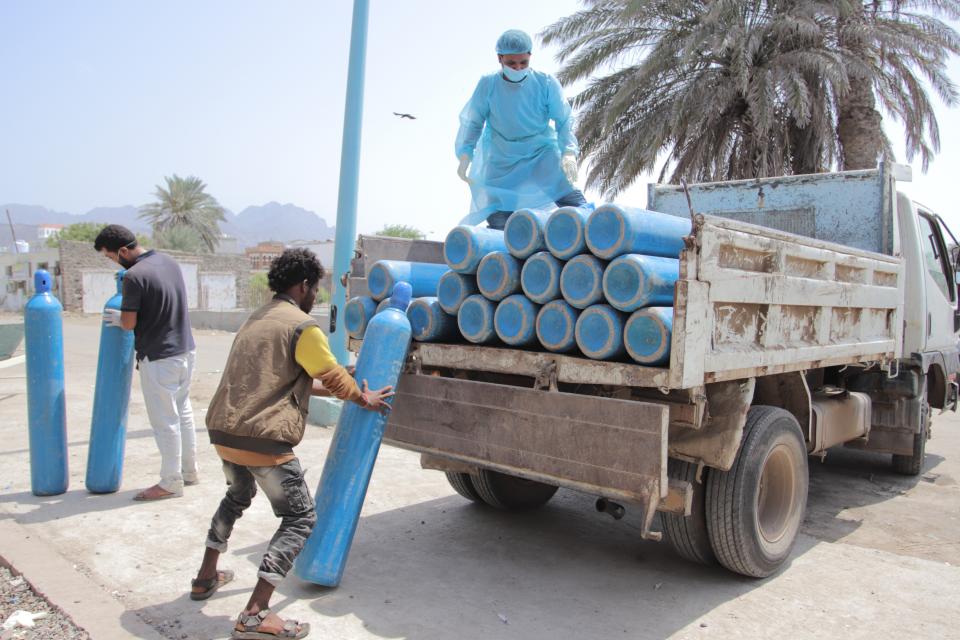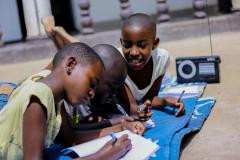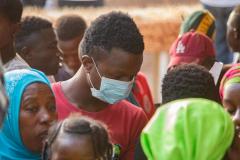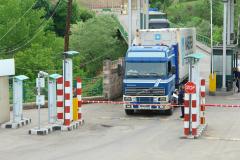- عربي
- 中文
- English
- Français
- Русский
- Español
How is the United Nations responding to the pandemic?

Photo: Oxygen cylinders are being delivered to hospital in Aden, Yemen. OCHA/Saleh Bin Hayan
The United Nations system through its global network of regional, sub-regional and country offices is supporting all governments and partners through the response and recovery of this crisis.
The United Nations Secretary-General has established a dedicated COVID-19 Response and Recovery Fund to complement efforts in low and middle-income countries to address the socio-economic impact of the COVID-19 crisis.
COVID-19 Recovery Fund
There are three main funds and appeals launched by the UN:
- Solidarity Response Fund: To address immediate health needs, WHO, UN Foundation and partners have launched a first-of-its-kind COVID-19 Solidarity Response Fund to raise money to address immediate health needs. The Fund supports the work of WHO and partners to help countries respond to the COVID-19 pandemic, raising over $150 million so far, as part of over $800 million WHO has raised in total.
- Humanitarian Appeal: To support the world’s most vulnerable countries, the UN launched a $2 billion coordinated global Humanitarian Response Plan to fight the impact of COVID in some of the world’s most vulnerable countries. It aims to protect millions of people and stop the virus from circling back around the globe. It brings together appeals and requirements from WHO, WFP, UNICEF, UNHCR, IOM, UNDP, UNFPA, UN-Habitat and NGOs, and identifies new needs. It is coordinated by UNOCHA and complements plans developed by the International Red Cross and Red Crescent Movement.
- Response and Recovery Trust Fund: To deliver rapid recovery, the UN Secretary-General established a COVID-19 Response and Recovery Trust Fund to support efforts in low and middle-income countries. It will enable the UN to provide a coordinated multi-agency, multi-sectoral response to national and local actions that address the socioeconomic impact of the COVID-19 crisis and enable rapid recovery.
Other Initiatives and Reports
The Secretary-General has also released a report on responding to the socio-economic impacts of COVID-19.
The report is a call to action for the immediate health response required to suppress transmission of the virus to end the pandemic and to focus on people – women, youth, low-wage workers, small and medium enterprises, the informal sector and on vulnerable groups – who are already at risk.
The report calls for enhanced international support for countries with limited ability to fund their own stimulus packages. It also calls for debt relief for countries at high risk of, or already in, debt distress, especially LDCs, and for the mobilization of concessional finance from multilateral development banks and private lenders.
The Secretary-General has also launched a Global Humanitarian Response Plan for COVID-19 and a series of reports looking at the effects of the pandemic on issues as diverse as education, older people, disability and migration.
For our part, OHRLLS continues to support the most vulnerable countries through the crisis, including our most vulnerable 91 dashboard, tracking international support to the most vulnerable states through this crisis.









